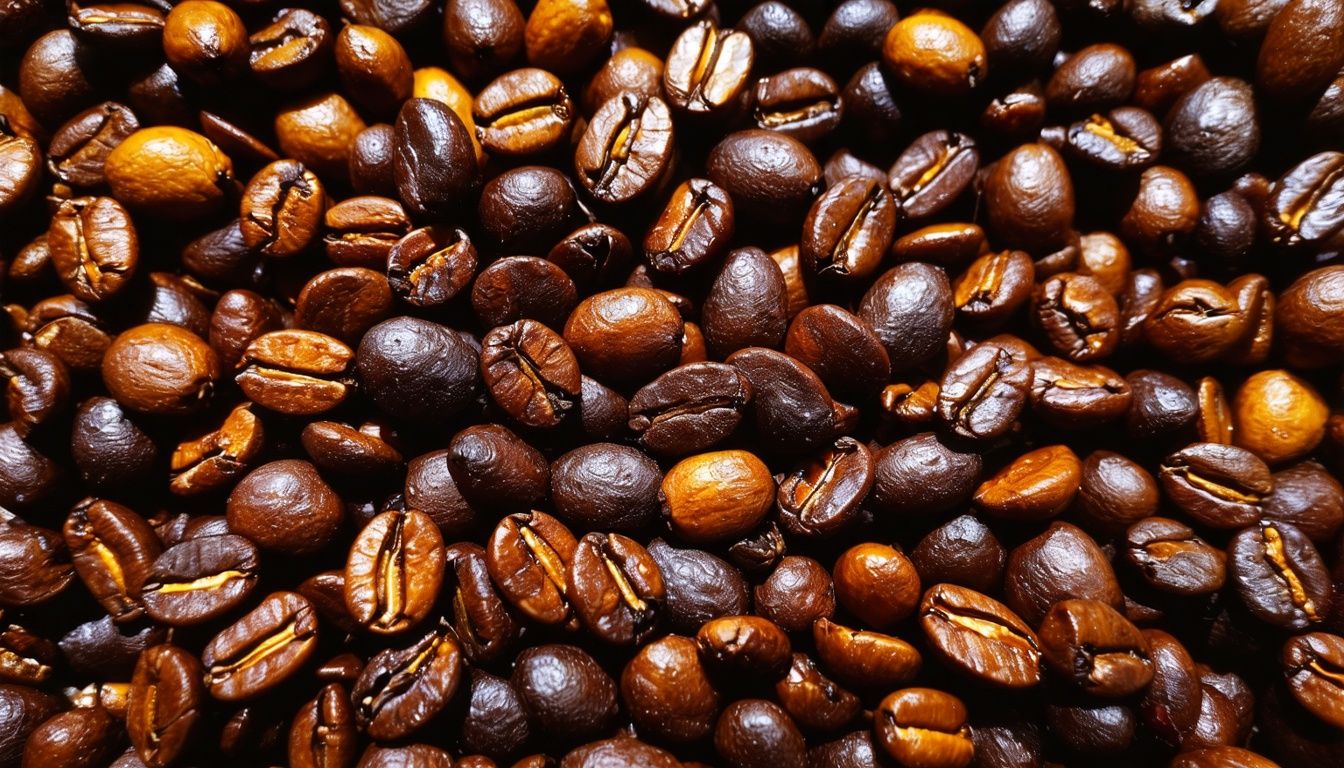Blog
Coffee Mouthfeel: Enhance Your Sensory Experience
Exploring the subtle nuances of coffee mouthfeel enhances your appreciation of this beloved beverage. As you sip, consider how the rich tapestry of textures plays across your palate, defining each brew’s unique character. In this exploration, we’ll delve into what influences mouthfeel in coffee and why it matters to your daily cup.
Understanding these sensory aspects can transform your routine into a more immersive experience. Let’s uncover the factors that contribute to the tactile sensations that make every coffee distinct and learn how they shape our overall enjoyment.
Defining Mouthfeel
Sensory Experience
Mouthfeel is how coffee feels in your mouth. It’s a part of the coffee’s body and adds to its overall character. When you take a sip, think about the texture on your palate. Is it silky, like a smooth fabric sliding over your tongue? Or maybe it’s creamy, thick and rich as if you were tasting heavy cream? Some coffees might even feel watery, thin and light without much substance.
Each sensation contributes to your enjoyment of the drink. The better you get at noticing these details, the more you’ll understand what makes each cup unique.
Coffee Tasting
To truly appreciate mouthfeel, use all your senses when tasting coffee. Pay attention not just to taste but also to how it feels. Temperature plays a big role here; hot coffee can seem thicker while cooler coffee may feel lighter.
As you sip, notice the weight on your tongue and the consistency of the liquid – is it uniform or does it change as you drink? These subtle differences are key elements that define every cup’s unique profile.
The Science Behind Mouthfeel

Key Compounds
When you sip a cup of coffee, the initial impression on your tongue is crucial. This sensation, known as mouthfeel, varies from one coffee to another. You might notice that some coffees feel thicker or creamier than others. As you taste different types of coffee, pay attention to how the texture changes from the first sip to the last.
- Compare espresso’s rich and velvety texture with that of a light filter coffee.
- Observe how milk-based coffees have a heavier body due to added fats.
The journey of mouthfeel doesn’t end at first taste; it evolves until the final swallow. Some coffees leave behind a silky smoothness while others can feel more watery or dry.
Texture Chemistry
Now let’s delve into what creates these sensations: acids, sugars, and fats are key players in influencing your coffee’s mouthfeel. Acids contribute to sharpness and clarity but too much can lead to an overly thin feeling on your tongue. Sugars add sweetness and fullness which enhance body and smoothness.
- Oils naturally present in coffee beans give rise to a smoother mouthfeel.
- Dissolved solids increase viscosity making your brew feel thicker.
It’s fascinating how these compounds interact within each cup of joe you enjoy! By understanding this chemistry, you become more adept at identifying why certain coffees have distinct textures – whether they’re oily, syrupy or somewhere in between.
Roast Profiles and Mouthfeel
Light vs Dark Roasts
The roast level of your coffee beans plays a crucial role in the mouthfeel you experience. Light roasts often result in a coffee that has higher acidity, which can lead to a sharper, more pronounced mouthfeel. This is because light roasting preserves many of the bean’s natural acids, affecting the pH levels. A lower pH means more acidity, which can increase astringency—that dry feeling on your tongue.
Water quality also affects how your coffee feels in your mouth. Hard water with minerals can enhance certain flavours and add to the body or texture of the drink. On the other hand, soft water may make it feel thinner.
Brewing temperature is another factor that changes mouthfeel. Hotter water extracts compounds quickly and might give you a fuller-bodied cup if used correctly.

Roasting Impact
Understanding how different roast profiles impact what you taste is important for enjoying your brew fully. Lightly roasted beans usually offer a crisper and lighter texture when sipped because they have fewer oils released during roasting.
In contrast, dark roasted beans create drinks with an oilier and heavier feel due to longer roast times breaking down more cell structure within the bean. This process releases oils into each bean’s surface.
The level at which beans are roasted also dictates how many soluble compounds end up in your cup after brewing—the darker the roast, typically, the more solubles there are present; this contributes significantly to both flavour intensity and mouthfeel.
Bean Origin and Texture
Regional Variations
The place where coffee beans grow can change their texture. Beans from different areas taste unique because of the way they are roasted. Roasting for a longer time often makes the coffee less sharp, which changes how it feels in your mouth. The roast level can make some textures stand out more or become less noticeable.
For example, if you try a bean with a light roast, you might find it has a bright and zingy feel. But if that same bean is dark roasted, its texture could be smoother and heavier.

Processing Methods
Every region’s beans have their own special mouthfeel. High mountains and cool climates can make beans dense and rich in flavour when you drink them. This means the coffee might feel smooth like silk or creamy like milk.
Single-origin coffees are known for having distinct textures that tell you about where they come from. A sip of Kenyan coffee may dance on your tongue with crispness, while Brazilian coffee might hug your palate with velvety softness.
Brewing Methods and Body
Extraction Techniques
When you brew coffee, the method you choose greatly affects the taste. Washed coffees are known for their clean, crisp mouthfeel. This is because all of the coffee cherry’s flesh is washed off before drying.
Natural or dry processed coffees keep some of this flesh, called mucilage, on during drying. This often makes your cup have a fuller body. It’s like choosing between skimmed milk and whole milk in terms of richness.
Honey processing is another method where some mucilage stays on. This doesn’t just affect sweetness but also gives a unique body to your drink. Imagine honey versus water; one flows slowly and smoothly while the other runs quickly.
Equipment Differences
The tools you use can change how your coffee feels in your mouth too. If it tastes bitter or leaves your mouth feeling dry, it might be over-extracted. This means pulling out too much from the beans during brewing.
Under-extraction gives a thin, sour profile to your drink because not enough flavour has been taken from the beans. It’s similar to making tea – steeping it for just right time matters.
To find that perfect texture extraction, play around with brew times using different equipment like French presses or espresso machines. Each device works differently so experimenting helps find what suits you best.
Assessing Coffee Mouthfeel
Tasting Steps
When you sip coffee, its texture is as important as the taste. Espresso machines are known for their ability to produce a dense, creamy mouthfeel. This is because they force hot water through finely ground coffee at high pressure. On the other hand, drip brewers often result in a lighter body.
Consider how different filters impact your cup. A paper filter can lead to a cleaner and clearer brew by removing oils and fine particles. Metal filters allow more of these elements through, adding richness to the mouthfeel.
Adjusting grind size also plays a crucial role. A finer grind can slow down extraction, leading to a fuller texture. Conversely, coarser grinds make for quicker brewing and lighter body.
Descriptive Vocabulary
To accurately assess mouthfeel, start with a clean palate; this means no lingering flavours from previous foods or drinks. Take time between sips to reset your taste buds.
Slurping isn’t rude—it’s essential! When you slurp coffee, it aerates and spreads across your tongue evenly. This technique lets you experience all aspects of texture more intensely. Pay close attention to the aftertaste too; it’s an integral part of mouthfeel that lingers after swallowing. Does it feel smooth? Is there dryness? These sensations contribute significantly to your perception of the coffee’s overall texture.
Milk’s Influence on Body
Dairy vs Alternatives
When you add milk to coffee, the mouthfeel changes. Full-fat dairy makes your drink feel velvety and rich. It can turn a sharp espresso into a smooth latte. Semi-skimmed milk is less heavy but still gives a syrupy texture.
Using alternative milks in coffee is popular these days, plant-based milks create different feels in your mouth. Almond milk might make your coffee seem slightly gritty, while oat milk often adds a robust thickness similar to full-fat dairy. Soy and rice milks are thinner, offering more delicate textures.
Textural Changes
Dairy can transform coffee into a creamy treat. The fat in cow’s milk blends with the oils in coffee, adding layers of richness. This combination creates that comforting feeling you know as creaminess.
Non-dairy options also change how coffee feels when you drink it. For example, coconut milk can give an almost buttery consistency due to its higher oil content compared to other plant milks.
The temperature of added milk matters too. Warm milk mixes better with hot coffee, ensuring every sip has balanced body and flavour. Cold or frothed milks have their own effects on texture; cold versions tend not to blend as seamlessly whereas frothed introduces air that lightens the overall density of your cuppa.
Appreciating Mouthfeel Diversity
Light-Bodied Coffees
Understanding the mouthfeel of coffee can greatly enhance your drinking experience. With light-bodied coffees, subtle changes can alter their delicate texture. Adding sugar or syrups might seem appealing, but it’s crucial to monitor these additions as they can modify the coffee’s original mouthfeel significantly.
Coffee cools down with time, and this cooling process changes how you perceive its weight and thickness. A hot cup may feel fuller than a cold one. Remember that stirring your coffee isn’t just about mixing in milk or sugar; it also affects the distribution of particles within the liquid, influencing the overall texture.
Full-Bodied Experiences
When exploring full-bodied experiences, start by identifying characteristics such as watery or tea-like qualities found in some light-bodied coffees. These aren’t negative traits—instead, they offer subtlety and refreshment without heaviness or stickiness on your palate.
Lighter textures are often associated with higher acidity which contributes to a crispness that many find desirable in their brews. It’s an intricate balance where each sip brings forth different sensations – from smooth silkiness to lively tangs on your tongue.
Summary
Understanding the concept of mouthfeel is crucial to appreciating coffee’s complexity. Your journey through the nuances of texture, from the science underpinning it to the impact of roast profiles, bean origins, and brewing methods, has illuminated how each factor contributes to the sensory experience. Milk’s role and the diversity of mouthfeel deserve your attention as they shape the final cup.
To deepen your appreciation for coffee’s mouthfeel, engage in regular tasting sessions. Take note of how different variables alter the body and texture. This practice will not only enhance your enjoyment but also refine your palate.
Frequently Asked Questions
What is meant by ‘mouthfeel’ in the context of coffee?
Mouthfeel refers to the tactile sensations perceived in the mouth when drinking coffee, encompassing texture, body, and consistency.
How does roast profile affect a coffee’s mouthfeel?
Darker roasts typically yield a heavier mouthfeel with a creamy or syrupy texture, while lighter roasts often have a lighter body and crisp finish.
Can the origin of coffee beans influence its mouthfeel?
Yes, bean origin can significantly impact texture; different regions produce beans with distinctive qualities that contribute to unique sensory experiences.
Does brewing method alter the body of coffee?
Indeed, various brewing methods can change the body of coffee. For example, espresso generally has a fuller body compared to pour-over which tends to be more delicate.
How do you assess the mouthfeel of coffee?
Assessing mouthfeel involves paying attention to weight, thickness and creaminess as it moves across your palate during tasting sessions.
In what way does milk modify the body of coffee?
Adding milk changes both flavour and texture; it can soften acidity and add richness or creaminess depending on fat content.



